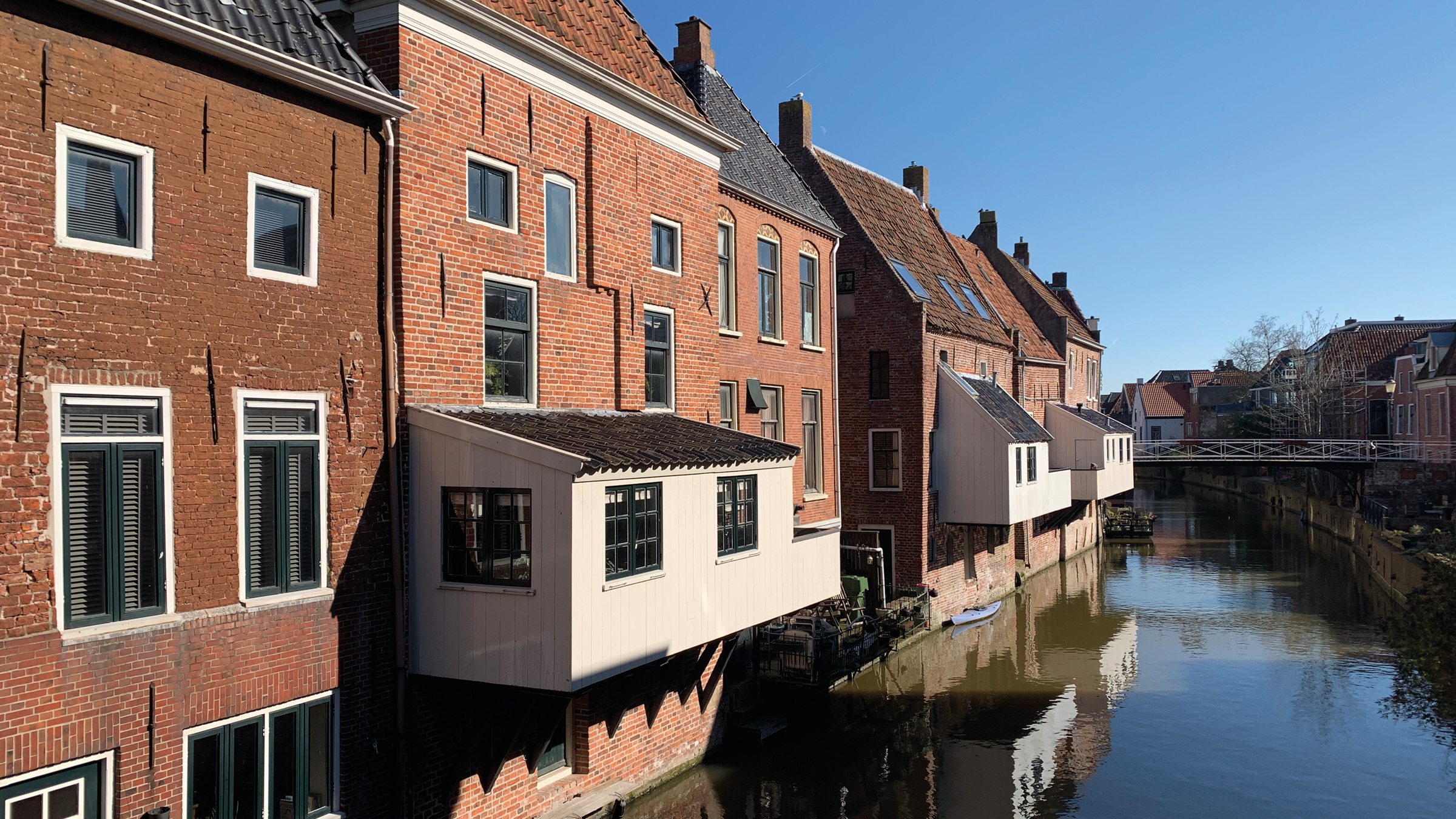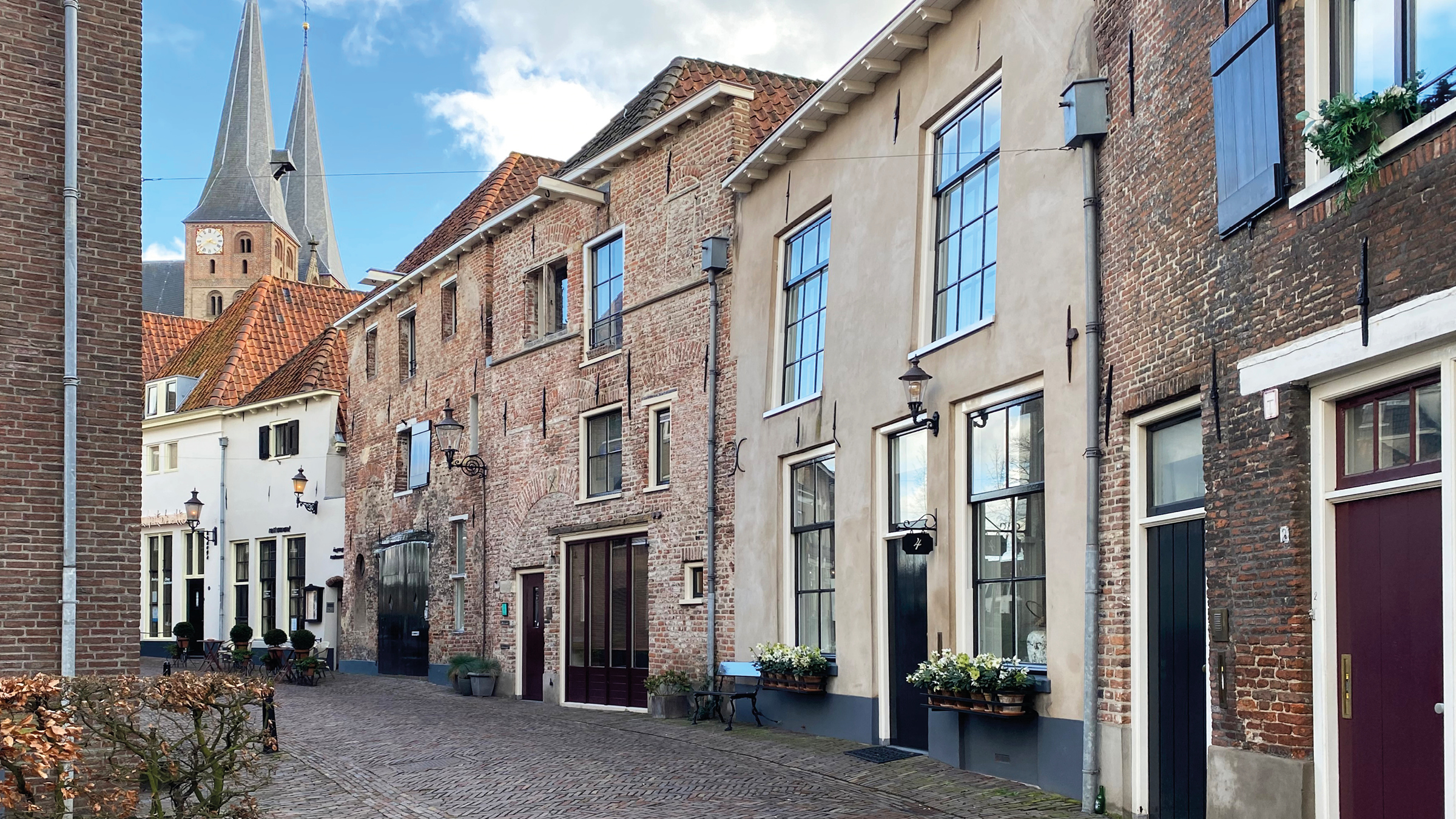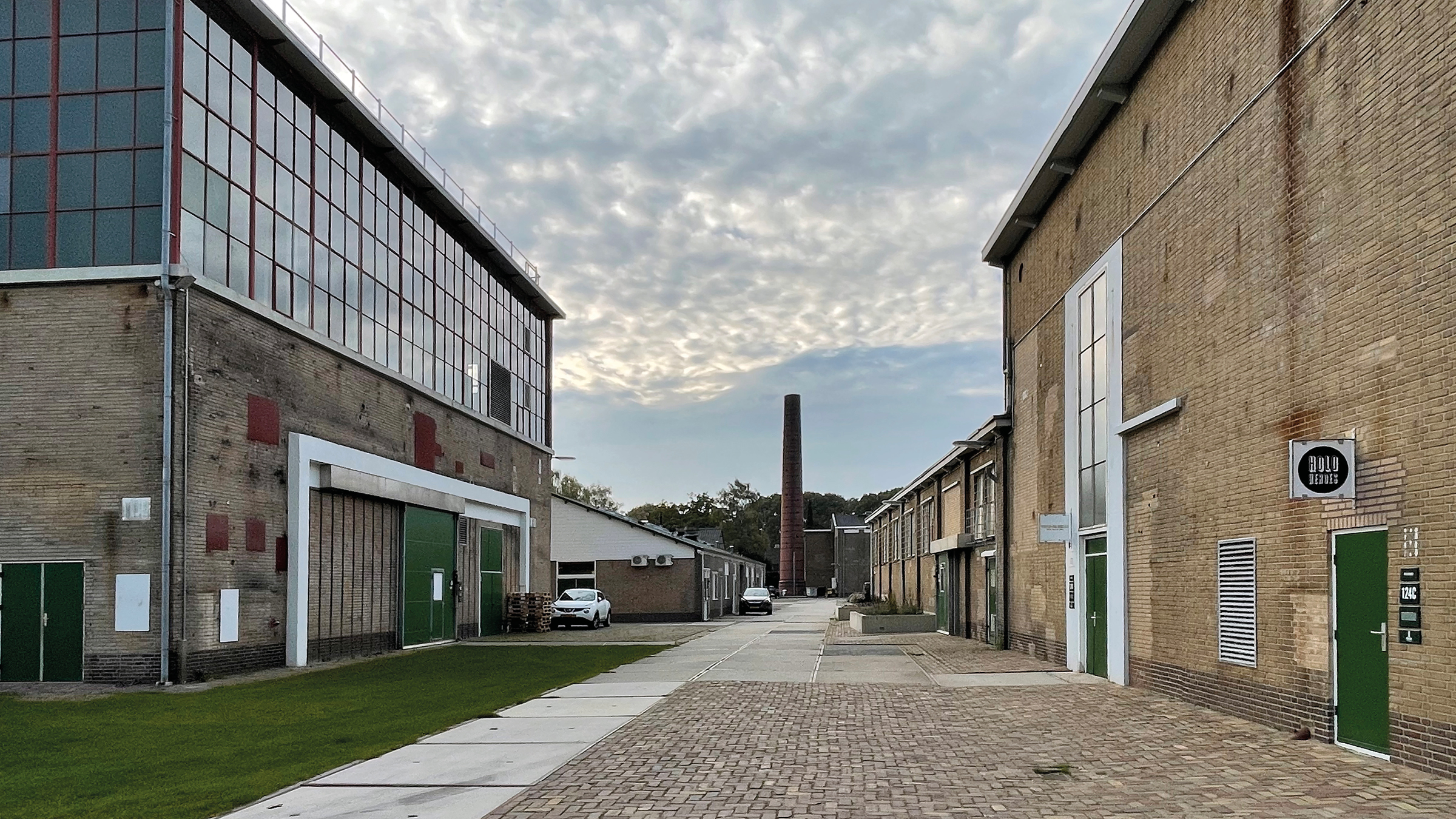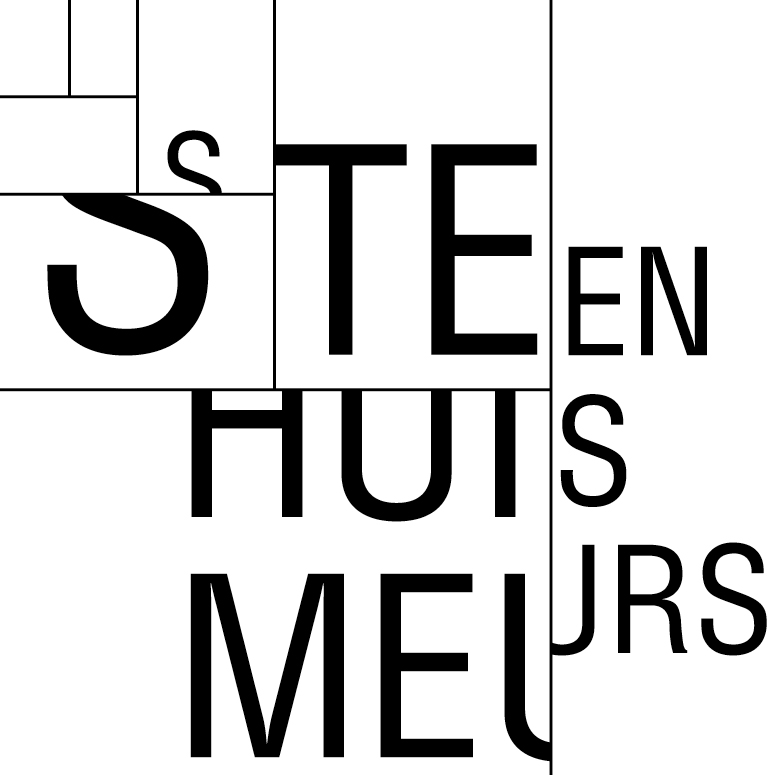



BUILDINGS AND URBAN AREAS – CULTURAL HERITAGE STRATEGIES
WHAT DOES STEENHUISMEURS DO?
The world is constantly changing. The old gives way to the new. In some places we must be more cautious than in others. Cultural heritage plays a pivotal role in ‘Omgevingsvisies’ zoning plans building permits and heritage policies. SteenhuisMeurs is committed to preserving cultural heritage in spatial planning. We assist governments and developers in formulating heritage policies and strategies while also developing tools for development in protected urban cityscapes and landscapes. In quality teams design meetings and conversations with the public we identify opportunities for transformation that enhance the cultural heritage values. Together we establish the level of ambition for each area ultimately improving the quality of plans.
CASE 1
HEALTHY AGING CAMPUS, GRONINGEN
Heritage strategy
commissioned by UMCG Groningen
Since 1903, the UMCG Hospital is located on the Oostersingel in Groningen. What began as a pavilion complex on the city’s edge grew, through successive transformations, into today’s extensive UMCG campus. The hospital has continually adapted to new medical and spatial insights, and this continues with the development of the Healthy Aging Campus (HAC).
At the same time, awareness has grown of the hospital’s heritage value. Several buildings are designated as characteristic heritage. This means their heritage values must be considered in future development. In some areas, such as the old pavilions along Oostersingel, the future plans fit well with the historic value. Elsewhere, such as the post-war buildings to the north and east, renewal ambitions have greater impact.
UMCG asked SteenhuisMeurs to prepare a cultural heritage study and strategy. The study mapped the campus’s historical layering, analysed its spatial characteristics, and identified heritage values. The strategy advised how these values can contribute to the future of HAC and its integration into the city.

A view of the UMCG campus
CASE 2
THE HERITAGE OF KEMA: PAST, PRESENT AND FUTURE
Heritage development strategy
in collaboration with Office Winhov and PeetersenDaan
The Den Brink estate in Arnhem was purchased by KEMA, an electrotechnical materials testing company, over a century ago. Various laboratories and testing facilities were built there within the structure of a country estate. The KEMA site became one of the most striking industrial areas in the Netherlands: a park with pavilions designed by top architects of KEMA’s own design office. KEMA has since moved and the estate is now a national monument. The new owner aims to redevelop the site into an ‘Electricity Campus’ for energy-transition.
SteenhuisMeurs was asked to draw up a heritage development strategy, using existing qualities and monument value as a basis. We proposed a design team combining architecture (Office Winhov), landscape (PeetersenDaan), and heritage (SteenhuisMeurs). Together, we developed a strategy to restore the site and its buildings, and make them more sustainable. The Municipality of Arnhem was closely involved.
Next steps include pilot projects for adaptive reuse, landscape restoration, and a transformation framework for future building and landscape development. Short-term projects include pilot renovations of vacant buildings, testing sustainability methods, and restoring the park with ecological replanting. Longer-term plans will define transformation frameworks to balance heritage preservation with new functions on the Electricity Campus.

Typical landscape and architecture of KEMA
CASE 3
BEELDKWALITEITSPLAN DEVENTER INNER CITY
Input cultural history and heritage strategy
commissioned by the municipality of Deventer
By Dutch standards, the inner city of Deventer is very rich in historical structures and layers. The oldest known stone house in the country is situated right next to a modern library. Since 1988, a major part of the inner city of Deventer has been a protected townscape. The municipality of Deventer wants to protect the characteristic structure and spatial quality of the inner city, as these aspects are closely related to Deventer’s historical development. This ‘beeldkwaliteitsplan’ sets out the guidelines for the desired architectural and spatial characteristics of the city centre, based on the existing qualities. Starting point is the integration of current issues and challenges – relating to climate, energy, mobility and new functions in the historic city. The ‘beeldkwaliteitsplan’ consists of three parts: a vision statement on the qualities of Deventer’s city centre, a manual for public spaces and the manual for buildings. The ‘beeldkwaliteitsplan’ is the result of an active participation process, with committed inhabitants, local business owners, politicians and administrators, who all participated from a desire to cherish the unique values of Deventer inner city. The ‘beeldkwaliteitsplan’ is available online (in Dutch only): deventer.nl/beeldkwaliteitsplan

Rules for the roofscape of Deventer's inner city




BUILDINGS AND URBAN AREAS – CULTURAL HERITAGE STRATEGIES
WHAT DOES STEENHUISMEURS DO?
The world is constantly changing. The old gives way to the new. In some places we must be more cautious than in others. Cultural heritage plays a pivotal role in ‘Omgevingsvisies’ zoning plans building permits and heritage policies. SteenhuisMeurs is committed to preserving cultural heritage in spatial planning. We assist governments and developers in formulating heritage policies and strategies while also developing tools for development in protected urban cityscapes and landscapes. In quality teams design meetings and conversations with the public we identify opportunities for transformation that enhance the cultural heritage values. Together we establish the level of ambition for each area ultimately improving the quality of plans.
CASE 1
HEALTHY AGING CAMPUS, GRONINGEN
Heritage strategy
commissioned by UMCG Groningen
Since 1903, the UMCG Hospital is located on the Oostersingel in Groningen. What began as a pavilion complex on the city’s edge grew, through successive transformations, into today’s extensive UMCG campus. The hospital has continually adapted to new medical and spatial insights, and this continues with the development of the Healthy Aging Campus (HAC).
At the same time, awareness has grown of the hospital’s heritage value. Several buildings are designated as characteristic heritage. This means their heritage values must be considered in future development. In some areas, such as the old pavilions along Oostersingel, the future plans fit well with the historic value. Elsewhere, such as the post-war buildings to the north and east, renewal ambitions have greater impact.
UMCG asked SteenhuisMeurs to prepare a cultural heritage study and strategy. The study mapped the campus’s historical layering, analysed its spatial characteristics, and identified heritage values. The strategy advised how these values can contribute to the future of HAC and its integration into the city.

A view of the UMCG campus
CASE 2
THE HERITAGE OF KEMA: PAST, PRESENT AND FUTURE
Heritage development strategy
in collaboration with Office Winhov and PeetersenDaan
The Den Brink estate in Arnhem was purchased by KEMA, an electrotechnical materials testing company, over a century ago. Various laboratories and testing facilities were built there within the structure of a country estate. The KEMA site became one of the most striking industrial areas in the Netherlands: a park with pavilions designed by top architects of KEMA’s own design office. KEMA has since moved and the estate is now a national monument. The new owner aims to redevelop the site into an ‘Electricity Campus’ for energy-transition.
SteenhuisMeurs was asked to draw up a heritage development strategy, using existing qualities and monument value as a basis. We proposed a design team combining architecture (Office Winhov), landscape (PeetersenDaan), and heritage (SteenhuisMeurs). Together, we developed a strategy to restore the site and its buildings, and make them more sustainable. The Municipality of Arnhem was closely involved.
Next steps include pilot projects for adaptive reuse, landscape restoration, and a transformation framework for future building and landscape development. Short-term projects include pilot renovations of vacant buildings, testing sustainability methods, and restoring the park with ecological replanting. Longer-term plans will define transformation frameworks to balance heritage preservation with new functions on the Electricity Campus.

Typical landscape and architecture of KEMA
CASE 3
BEELDKWALITEITSPLAN DEVENTER INNER CITY
Input cultural history and heritage strategy
commissioned by the municipality of Deventer
By Dutch standards, the inner city of Deventer is very rich in historical structures and layers. The oldest known stone house in the country is situated right next to a modern library. Since 1988, a major part of the inner city of Deventer has been a protected townscape. The municipality of Deventer wants to protect the characteristic structure and spatial quality of the inner city, as these aspects are closely related to Deventer’s historical development. This ‘beeldkwaliteitsplan’ sets out the guidelines for the desired architectural and spatial characteristics of the city centre, based on the existing qualities. Starting point is the integration of current issues and challenges – relating to climate, energy, mobility and new functions in the historic city. The ‘beeldkwaliteitsplan’ consists of three parts: a vision statement on the qualities of Deventer’s city centre, a manual for public spaces and the manual for buildings. The ‘beeldkwaliteitsplan’ is the result of an active participation process, with committed inhabitants, local business owners, politicians and administrators, who all participated from a desire to cherish the unique values of Deventer inner city. The ‘beeldkwaliteitsplan’ is available online (in Dutch only): deventer.nl/beeldkwaliteitsplan


